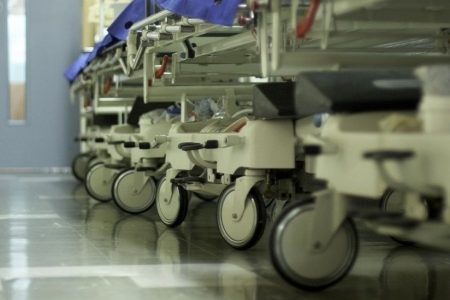The sickest patients are facing long waits for a bed when they are admitted to hospital in England, NHS data shows.
A third of the A&E patients – 122,000 in total – who were ill enough to need treatment on a ward waited over four hours in January – a record high.
Some 16,500 of them waited over 12 hours – many either stuck on trolleys in corridors or in A&E bays because wards were full.
Doctors warned the situation was putting patients at risk.
These patients are ones who will have already faced a wait to be seen in A&E, but need further treatment because their condition is so serious.
The NHS England figures also showed cancer waiting times have hit their worst level since records began, with only two-thirds of patients starting treatment within the target time of two months following an urgent GP referral.
Meanwhile, the numbers of people on hospital waiting lists for planned treatments has risen to 6.1 million.
Earlier this week ministers set out a recovery plan to tackle the backlog in treatments, which includes people waiting for hip and knee replacements.
They warned the waiting list could keep rising for two years before starting to fall.
Waiting times have worsened in other parts of the UK, with Wales and Northern Ireland data showing even worse performance than England on many measures.
If you can’t see the lookup, click here
Dr Tim Cooksley, president of the Society for Acute Medicine, said hospitals were stuck in a “vicious cycle” of delays which was affecting patient care.
He said the waits for planned care were beginning to have an impact on A&Es, with the health of patients deteriorating to the point where they need emergency treatment.
“Services are under significant pressure,” he added.
But there are continued signs that immediate pressures related to Covid are easing.
The number of patients in hospital with Covid now stands at just over 11,000 in England, down from over 17,000 in early January.
It means around one in nine beds are occupied by Covid-positive patients, although half of them have the virus but are being treated for something else.
The proportion of staff absent with Covid has dropped to 3%. In recent weeks it was over 4%.
NHS national medical director Prof Stephen Powis said the full impact of the “Omicron winter” was now emerging.
But he praised the “hardworking” staff for keeping services going.
